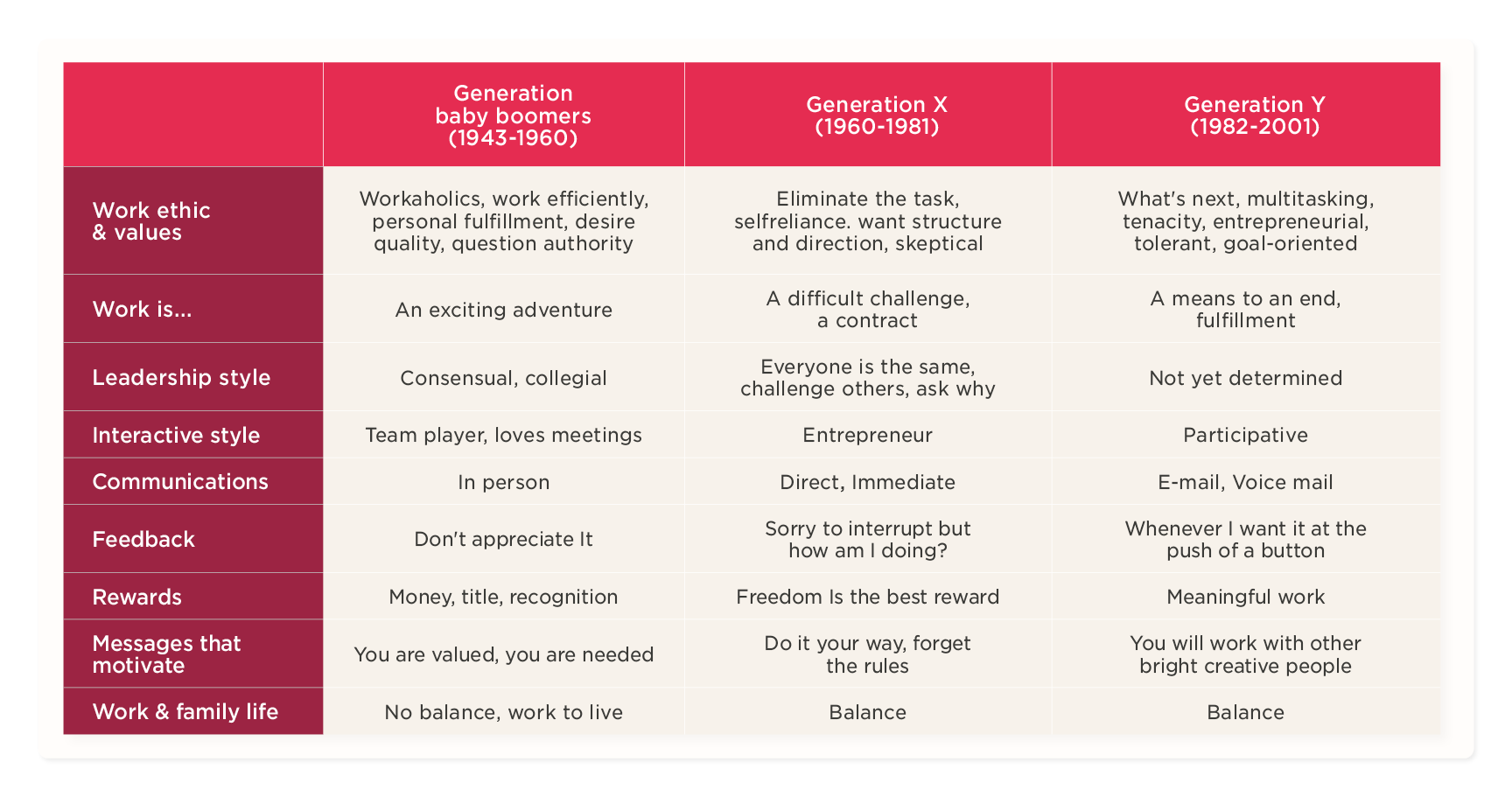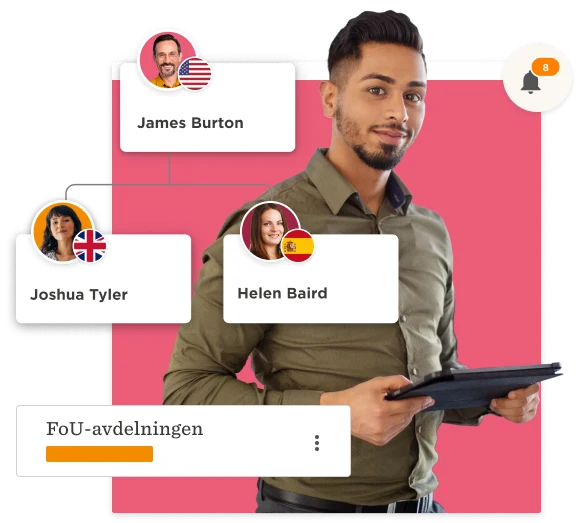Business leaders and HR directors all over the world are paying close attention to the vast HR transformation that’s underway: an epidemic of disengagement. Gallup found that only 21 percent of employees are engaged at work, and just 33 percent report that they are thriving in their overall wellbeing. This means that most people don’t find their work meaningful, don’t think their lives are going well or don’t feel hopeful about their future.
This kind of low engagement alone costs the global economy $7.8 trillion, so factoring employee wellbeing into your strategic plans—and finding ways to keep them motivated—are imperative.
But the challenges don’t stop there. Against an uncertain economic backdrop and a looming global recession, keeping your people motivated has never been harder. And wherever you look, hierarchical corporations and agile startups alike are struggling to adapt to a changing, multi-generational, multi-national workforce. With companies of all sizes worrying about their bottom line, it’s up to HR directors to champion the value of investing in the employee experience to retain their best asset: their people.
That means that adding wellbeing measurements to executive dashboards and prioritizing employee wellbeing as part of your employer brand promise are critical steps for HR directors at global organizations. The logic is simple: create the kind of workplace that your people want, in which you can take them from job satisfaction to engagement. By fostering fulfillment and building engagement, both your people, and your business, will thrive.
To build employee motivation, you need to recognize their achievements, make sure your internal communications are transparent, and foster a culture of access to leadership. By empowering your workforce to view their roles as part of something bigger, they will feel a keener connection with your mission and vision, build trust and loyalty, and ultimately supercharge their performance.
This guide will explore proven approaches to inspiring motivation through culture and management, and ways to create a workplace that lends itself to this goal. We’ll also dive into proven motivation-building techniques that can help you through these challenging times, and address the role that technology can play in supporting this.

Focus on culture
When it comes to motivation at work, Peter Drucker’s famous saying, “Culture eats strategy for breakfast” certainly applies. A positive workplace culture is a crucial foundation for inspiring employee motivation, which is why so many businesses are focusing on being people-centric in everything they do.
Good company culture is at the heart of a successful modern organization, especially in a time of recession. As Jason Randall writes in Forbes, “people want to feel good about their work, which makes a strong company culture the best protection against turnover.” Feelings of connection, loyalty, and empowerment are powerful tools for keeping your people reassured in challenging times, and making sure they feel happy and content at work. That way they will be more productive, more loyal, and help you achieve your strategic goals—without affecting your bottom line.
Motivation and engagement can only be achieved if your company culture includes transparent policies surrounding progression. Effective management and positive leadership strategies will develop those people who take pride in their work and seek advancement, and by positively reinforcing goals and celebrating achievements, you will make your people feel valued. In turn, that will create a positive workplace culture that supports and encourages others to do the same.
Remember that no one-size-fits-all: generational differences
Since we’re talking about individuals here, it would be a mistake to assume that identical motivational techniques can be applied across the board. Generational differences, in particular, impact the ways that motivational techniques affect your people.
Goldbeck’s renowned matrix of Generational Values and Personality (2010) addresses motivation through the eyes of three of today’s primary generations of workers: Baby Boomers, Generation X, and Millennials. The matrix points out the stereotypical generational values and personalities, and highlights how these affect their approach to work, leadership, interaction, and other motivating factors.

To add further complication, Generation Z (1997-2012) are now an important part of the mix: by 2025, they’re expected to account for 27 percent of the workforce. Generally speaking, this demographic is more entrepreneurial and fiscally responsible, having been raised in times of recession. Interestingly, 1 in 2 GenZs are university-educated, compared with 1 in 3 Millennials and 1 in 4 GenXers.

Of course, it’s important to understand that these generational descriptions are stereotypes. Employers must get to know each and every member of their team, and understand their preferences vis-a-vis work-life balance, compensation vs. benefits, and more.
Of course, it’s important to understand that these generational descriptions are broad generalizations. While they can be a useful tool for considering different needs amongst your people, leaders and managers alike must get to know each and every member of their team on a more personal level. That way, you can glean a clear understanding of their preferences towards their work-life balance, compensation, benefits, and more.
Adopt one-to-one management
As people employed by the same company vary, so too should the way they are approached, measured, and rewarded. One-to-one management revolutionizes traditional approaches by tailoring techniques for each individual. By pinpointing what makes each of your people tick, your managers can make their team members feel truly cared for, and appreciated as unique individuals.
“Employee-tailored services can be as inexpensive as changing cleaning products to ease the airways of an asthmatic, or special-ordering vegan and kosher meals at company functions. They can also be cost-effective, delivering the same bull’s-eye impact as target marketing. Target marketing aims to provide the appropriate products and services to people with specific needs,” explains one software company’s CEO, who didn’t want his organization’s accommodating nature publicized. “Similarly, if you target the right benefits to the individual, you eliminate a lot of waste and inefficiency associated with providing blanket benefits to people who didn’t want or need them.” – INC MAGAZINE
Engaging with your people on a personal level with tailored management styles will boost their engagement, help your managers to identify ways of keeping them motivated, and ultimately reduce turnover—even in times of recession.
The most successful HR directors understand how this approach should be mirrored throughout their organization, in order to increase team cohesion, retain the best talent, and help them to achieve strategic business goals.
Plan regular information-sharing
Technology has allowed organizations to become truly global and hyper-productive, driving fast growth and rapid change. While that’s great for business, it can make it difficult to keep your people in the loop with these changes. It’s crucial to keep them regularly updated on your business goals and strategy, especially in the face of recession and potential structural changes, so that they feel like an important part of the company. In difficult economic times, it’s even more crucial to keep your teams informed and reassured that their jobs and livelihoods are safe. By translating your director-level view of the big picture for teams across your organization, you’ll build their connection and motivation.
Depending on the nature of your work and the locations of your teams, the ideal format in which to communicate will vary. Empower managers to identify the best solution for their team, whether that’s through stand-up meetings, email newsletters, shared documents, internal communication platforms (such as Slack or Microsoft Teams), company intranet, town halls, webcasts, or video conferencing.
Equally, be wary of information overload. When people feel inundated by new information, they’re much less likely to click on messages and take anything in, so make sure managers keep their communications concise, informative, and eye-catching. You can even consider segmenting your messaging to appeal to each demographic, just as you would with external communications.
Consider work-life balance
Are your people stuck at their desks for 12-hour days on a regular basis? Recognizing the need for a balance between team members’ professional and personal lives is critical to their long-term happiness and productivity, and just as equally important to the health of the business.
While—generally—wellbeing is moving up the agenda at global businesses, it’s not all smooth sailing. The UK-based CIPD found that while 70 percent of HR respondents agree that employee wellbeing is on senior leaders’ agendas, this is actually down from 75 percent in 2021. Similarly, 60 percent believe that their line managers have bought into the importance of wellbeing, a drop from 67 percent in 2021.
When leadership figures fail to prioritize their employees’ wellbeing, a negative culture is likely to evolve. For example, people may regularly work excessive hours, or feel uncomfortable taking time off. All of these factors combined can quickly lead to burnout and a higher rate of churn.
On the other hand, a healthy work-life balance increases employee productivity and heightens employee engagement. It reduces costs associated with employee turnover and absenteeism. Reduced stress will mean lower medical costs, and a focus on wellbeing will create a more attractive workplace that is in tune with its people.
Some effective ways to achieve work-life balance include:
- Increased autonomy
- More flex time and openness to work from home
- Extended maternal and paternal leave
- Increased time off
- Setting clear boundaries
- Introduction of annual employee family event
In the US, leaving vacation days unused has become an unfortunate national pastime, with workers leaving 9.5 days unused on average at the end of 2021, according to data from Qualtrics. The productivity of employees who refrain from enjoying their vacation time suffers, and so encouraging your people to make the most of their annual leave results in a net-positive return for the company. For that reason, some lay on generous vacation stipends or other perks, and others, like Netflix and Virgin, offer unlimited vacation policies.
Everyone agrees that people’s productivity surges after taking a break, but the backlog of emails, never-ending catch-up meetings, and overwhelming piled-up tasks can be a strain on even the most motivated of employees.
Your managers can help refocus their team members by using these tips:
- Ease back into reality, starting on your last day of vacation
- Create a game plan to prioritize, delegate, and conquer
- Use time management apps and tools to successfully get through the transition period
- Pace yourself: leave work for tomorrow
How can you create an inspirational environment?
Employee motivation is bred in an environment that inspires. Here are three ways that you as an HR director can boost employee morale and lay the foundations for an inspirational workplace:
1. Encourage creativity, innovation—and failure
Today’s leading innovators are not leaders by coincidence. They have invested time and resources to heighten creativity among their teams, and continuously aim to perfect the process of taking an idea from conception to production. Their successes highlight the importance of leveraging creative thinkers by affording them the opportunity to think outside of the box. It also just so happens that the creative process is highly engaging, and generates excitement and passion for those involved.
Google, arguably one of today’s leading innovators, shares some of the tools, mindsets, and approaches in its Re:Work blog. Google’s most invaluable lesson is the way it relates to the risk of failure. In its Re:Work guides on innovation, organizations are advised to determine their tolerance for failure, keeping in mind that peoples’ fear of failure will directly impact innovation. Companies must consider how much risk they are willing to expose themselves to by encouraging innovation, and supporting their team members to be less fearful of failing. Some Google teams even hold a “premortem” to discuss what may go wrong before the project actually begins, which normalizes failure by openly discussing it:
“Every quarter, Google’s leaders review their performance against set objectives and key results (OKRs) in front of the whole company. More often than not, teams don’t hit their goal 100 percent, but aren’t ashamed to share details of their progress and missteps. Leaders regularly explain why they didn’t fully achieve their stated goals, what they’ve learned, and what they plan to do next to move forward. Modeling failure in this way sends a powerful message to everyone in the company that it is OK to fail so long as you learn from it, share what you’ve learned, and make plans to do better…”
Creativity and innovation might take time to bear fruit, as people become less inhibited, and employers become more supportive and open-minded. But by encouraging your people to unleash their creative juices, you’ll boost engagement, improve retention, and benefit from the kind of innovation that can only come from highly engaged teams.
Here are some creativity-building strategies to help inspire your people to become more fulfilled and productive:
Creative environment: First, create an environment that encourages creativity. You could dedicate one area of your physical office to creative play—and give team members ownership over it—or dedicate a similar space and portion of time in your digital platforms.
Work hard, play harder: Allow your team to play. Supercharge ideation sessions with colored markers, flip charts, Lego bricks, play dough, painting, music, and other creative tasks: anything that sparks the creative process and encourages different ideas.
Ideation: Encourage managers to set a bi-weekly meeting where they can gather their team in person or online to work on a problem or project. This gives everyone involved a clear idea of what’s on the agenda before entering the meeting.
Goal board: Create goal boards where each team can record the strategies that your company is striving for. Encourage them to focus on one goal or problem to solve or work on each week.
Homework and teamwork: In globally dispersed teams, managers might even consider giving their team some pre-work, so that people come to the meeting with a suggestion or solution to the goal or problem already in hand.
Reward creativity: Rewarding creativity, play and experimentation is essential to make creative workshops productive and effective. Without that feeling of safety and support, people will find it much harder to be truly creative and to engage wholeheartedly with the process.
Establish engaging rewards: Consider giving managers a budget to offer incentives for creative participation, such as movie tickets, a bottle of wine, a massage, a voucher, or money. You could even go a step further and have a cross-organizational board to acknowledge and encourage creative thinking.

2. Learning and development
Offering L&D opportunities to your people gives them the chance to contribute to the success of the company while developing their own skillset, and helps you to keep hold of the best talent during times of recession. By investing in their future, you’ll also demonstrate how much you value them, bolster their sense of security and confidence at work, and support them in delivering your strategic goals.
However, sending your people to a course or giving them free access to online courses is not always enough. Your managers must ensure that their people can apply their newly gained knowledge in practical ways, advancing the way they accomplish their work, and benefiting their careers.
Successful training programs are built on a clear understanding of what motivates people and link workplace learning to measurable objectives. When shaping your programs, make sure you’re using courses that are experiential, interactive, and, ideally, gamified, to make for the most engaging and effective courses. Help managers create recurring opportunities for development, depending on the overall objective. Research suggests you should even ask them: What is the attitude of those following the program?
Learning to grow: Almost half of surveyed employees (45 percent) said they wanted an exciting challenge, project, or new role to tackle and as a result, wanted to learn new skills.
Learning to catch up: A third of employees said they were learning because they needed to fill missing skills (31 percent). In this learning moment, employees are a bit more anxious, but they are still excited to learn. They view learning as a tool they can use to fill in any skills gaps they need to complete a project or simply perform in their role.
Learning for external change: 8 percent of those surveyed turned to learning as a result of an external change at work, a situation outside of their control. For example, the company may have decided to change programming languages, reorganize the team’s structure, or introduce a new tool. These external changes force people to learn.
Always learning: An even smaller group of people, 6 percent of those surveyed, were learning simply for the sake of learning. These individuals are your constant, motivated learners and natural evangelists for L&D. They find learning moments and opportunities everywhere and seek to learn in every work situation.
Recommended For Further Reading
3. Varied recruiting
A motivational culture is fundamentally impacted by the kinds of people employed by a company. Typically, recruiters should be briefed to focus their hiring efforts on high performance over hiring candidates of similar characters and backgrounds. A workplace filled with clones is likely to be pretty unexciting, whereas one filled with experts from all walks of life will introduce unique perspectives and attitudes forming a more balanced environment. In a global business world, this has never been more true.
At the same time, make sure your recruiters are paying attention to candidates with high Emotional Intelligence, also known as Emotional Quotient (E.Q). E.Q. was ranked 6th in the World Economic Forum’s list of the top 10 skills that employees must possess to thrive in the workplace of the future. Individuals with a higher E.Q. are more capable of self-regulation and possess higher levels of motivation. This reduces their tendency to procrastinate, leads to increased self-confidence, and enables them to focus on achieving long-term goals. These individuals are most likely to take pride in accomplishments purely for their own personal fulfillment, and will contribute the most to an engaged, motivated, and productive workforce.
Compensation and motivation
For HR directors, the obvious and most effective way to boost your people’s productivity is through competition and reward. However, regular monetary incentives risk becoming an expectation rather than a reward and, in times of recession, tighter budgets simply might not allow for financial incentives of any kind.
While incentivizing your people is an effective way to build motivation, one by-product of instituting either monetary or non-monetary incentives is the competition it creates in the workplace. While this can act as a powerful motivator, it can also wreak havoc if not used wisely. Keep track to be sure that managers aren’t routinely rewarding the same kind of person, as this can destroy others’ confidence or even build resentment.
At its worst, competition can affect teamwork, reducing collaboration: instead, your people should feel they are competing against themselves rather than others, spurring self-improvement rather than jealousy, animosity, or negative vibes amongst teams.
However you choose to compensate and motivate your people, it’s worth considering the structure you use, as well as different kinds of engagement-boosting rewards.

Compensation structures that motivate employees
Special rewards are a great way to build motivation among your people, as they’re rarely issued, and only when they are well-deserved. These can build traction in performance while an employee is involved in a large or complex project, and can impact the enthusiasm of the entire team involved. These rewards are not necessarily competitive with another employee; they can be granted to an employee who outdoes themselves, surpassing their normal capabilities.
Scheduled rewards are the annual bonus type of arrangement that follow every annual review where an employee shows a measurable improvement. While people have come to “expect” these incentives, they still tend to motivate performance as they are only awarded once goals are met.
Both special and scheduled rewards are based on employee performance, reinforcing their sense of control over their compensation. They can both be powerful motivators.
Profit sharing is another way of incentivizing your people based on the company’s profitability, that doesn’t pit employees against each other competitively. Rewarding people with company options reinforces a feeling of “buy-in” and will encourage continual productivity in a non-competitive way. Some companies may opt to donate a percentage of profits to a charity or non-profit, and that may resonate with some of your people who wish to donate to a special cause. This may appeal to many Millennial and GenZ employees who are known for their aspiration to a life of fulfillment, purpose and meaning.
Employee recognition
While pay is the number one reason people come to work each day, it’s far from the only motivator. They may have a strong desire to make a contribution to the company, to be treated fairly, and to be valued for their efforts.
The best business leaders recognize this, which is why as many as 80 percent of companies have implemented employee recognition programs. These types of programs create a structure through which senior managers select and thank individuals or teams for noteworthy achievements that are both isolated and ongoing, thereby improving retention and creating a winning culture in the company.
The rewards involved can vary greatly, and different rewards will be appreciated differently, depending on the individual’s character, values, and sometimes generational differences. Popular rewards include:
- Simple positive feedback one-on-one, or verbal accolades in a staff meeting
- Written thank-you notes or positive employee feedback on their file
- Spot bonuses including cash, gift cards or other ‘treats’
- Vacation packages for outstanding performance
An effective Employee Recognition Program contains clear criteria that everyone can understand. It will also support your wider business initiatives, and provide meaning for your people. The rewards must be fair, adequate, and aligned with organizational goals and values. It’s also important that you can measure the success of your program, so you can track the value it creates using retention, financial results, and people productivity metrics.
Although companies typically recognize their peoples’ length-of-service milestones and instances of strong individual or team performance, many of them are beginning to focus on less traditional areas for recognition, such as:
- The ability to manage or champion change
- Innovation
- System improvements
- Customer or client retention
- Morale-building
- Talent acquisition and retention
- Market diversification
- Technological advances
- Significant personal development
- Actions that embody the organization’s core values
The importance of great leaders
In his now-legendary TED Talk “How Great Leaders Inspire Action”, Simon Sinek points out that motivation is not something that can be enforced. He opines that it is the role of a leader to inspire motivation:
“As it turns out, all the great inspiring leaders and organizations in the world, whether it’s Apple or Martin Luther King or the Wright brothers, they all think, act, and communicate the exact same way… But the inspired leaders and the inspired organizations regardless of their size, regardless of their industry—all think, act and communicate from the inside out.” – Simon Sinek
Just as great leaders hold the power to inspire an entire company, poor leadership can be equally as destructive. Business leaders and HR directors must ensure that managerial practices foster the kind of experience that will breed motivation. This means managers must avoid habits that constrain autonomy, reduce excessive monitoring, and cut back on any unnecessary authorization. They must also be trained to employ motivation-boosting techniques in their day-to-day interactions with teams.
Here are three of the biggest motivation-boosting techniques your managers should be using:
1) No more micromanaging
- Eradicate any behavior that is destructive or demoralizing
- Make sure managers interact with their team in a transparent and communicative manner
- Encourage them to relinquish control, let go of perfection, and delegate responsibilities
2) Step out of their comfort zone
- Managers should help everyone combat boredom by taking on team challenges that freshen things up
- Leaders should be the trailblazers who step out of their comfort zone first
- By sharing this process with their teams, people can get onboard and take on their own challenges, boosting motivation and confidence
3) Promote project ownership through autonomy
- Managers should involve staff in the project decision-making process, from planning, reporting and evaluation as well as just the “doing”
- Encourage people across the organization to apply their own judgment in solving problems and making decisions that influence their work and the future of the company
- Enable people to see their tasks through to completion, communicating their contribution to the final product and how it fits into the big picture

Motivation is essential in challenging times
Employers all around the world are revisiting their strategies to build employee loyalty, engagement, and enthusiasm in a tough economic climate. High levels of motivation can translate into recession-busting performance levels that keep your talent onside, reduce churn, and help you manage budgets more efficiently.
Rather than relying on any one individual to empower your teams, HR directors need to lay the foundations of an inspirational work environment, promoting managerial approaches that will encourage people to take pride in their achievements and seek professional advancement. Incentivizing employees and celebrating their successes will make your people feel valued, in turn creating a positive workplace culture that supports and encourages others to do the same.
Today’s Human Resources Information System (HRIS) platforms give you the ability to customize and tailor your approaches to each professional, and provide powerful features that help you drive plans into action. By implementing tools that automate data collection and reporting, you can make data-driven decisions to create a plan that ignites your company culture and builds employee motivation.
Meet Bob
Bob is designed and developed for the new world of work. On-site, hybrid, and remote HR leaders can drive culture, two-way communication, engagement, performance, and compensation. Bob’s innovative UI, automated processes, and integrations with leading third-party tools ease administrative tasks for everyone across the organization and make even the most mundane work tasks pleasant, intuitive, and engaging—and not just for HR admins. Bob puts people first with culture tools that connect co-located and remote employees to their fast-growing, global companies.
